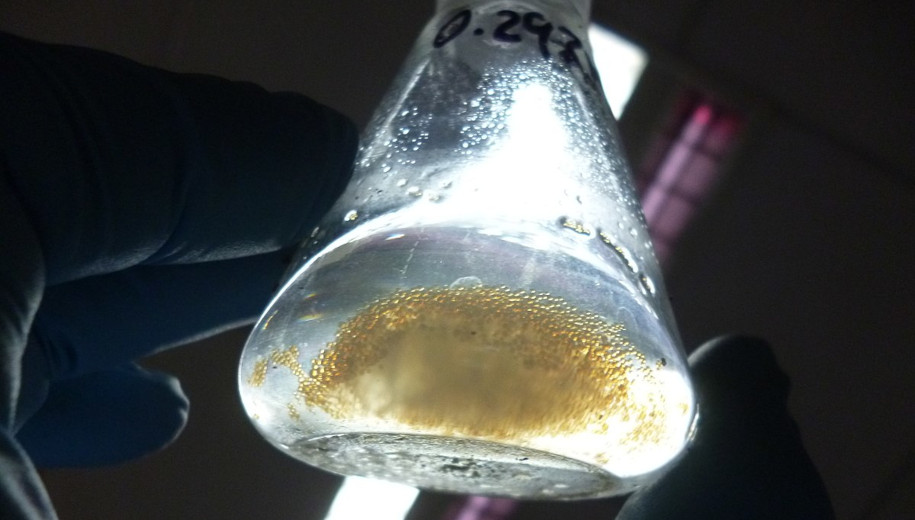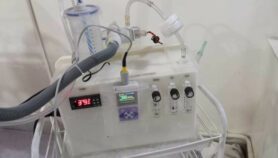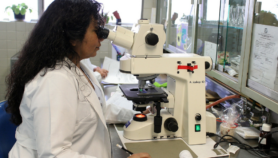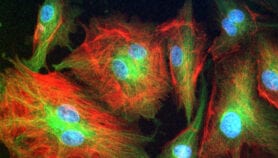06/11/20
Waste to wealth with new generation nanocatalyst

By: Neena Bhandari
Send to a friend
The details you provide on this page will not be used to send unsolicited email, and will not be sold to a 3rd party. See privacy policy.
[SYDNEY] Researchers have developed a new and cheaper method of recycling used cooking oil and agricultural waste into biodiesel, and efficiently convert food scraps, micro-plastics and old tyres into valuable molecules used in medicines, fertilisers and biodegradable packaging.
The findings of the research, an international collaboration led by RMIT University in Melbourne (Australia) published 26 October in Nature Catalysis, point to the multifunctional properties of the new and more efficient catalyst, a highly porous, micron-sized ceramic sponge that contains different specialised active components that accelerate chemical reactions. Molecules enter the sponge through large pores, where they undergo the first chemical reaction, and then pass into smaller pores to undergo the second reaction with the help of nanoparticles.
“The multifunctional catalyst offers a low-cost and low-tech route to recycle carbon contained in this waste — from rice husks and vegetable peelings to rancid used cooking oil — and advance towards a circular economy”
Karen Wilson, RMIT University
“Biodiesel is currently manufactured using soluble catalysts. These are difficult to recover (for reuse) from the fuel product, can corrode engines and are rapidly ‘poisoned’ by contaminants present in the oil feedstocks,” says Adam Lee, co-lead investigator and professor of sustainable chemistry at RMIT University.
“Our new, solid catalyst is cheap to fabricate, easy to recover (and reuse) from biodiesel, requires less energy and creates less waste for biodiesel production,” Lee tells SciDev.Net. “It also includes a built-in cleaning component that neutralises common contaminants; this allows the catalyst to cope with dirty oils, and to keep working for longer without needing to be replaced, offering a significant cost saving.”
“It’s the first time a multi-functional catalyst has been developed that can perform precise control over the chemical reactions sequence, enabling it to target production of specific molecules. It could be a game changer for the US$34 billion global catalyst market,” explains Lee.

According to the researchers, laboratory tests have shown that the new catalyst can also double the yield of esters — key chemical intermediates in the manufacture of fragrances, flavourings and polymers — compared to conventional mono-functional catalysts. It also produces almost 100 times more fatty acid methyl esters from contaminated oil feedstocks than conventional catalysts.
“Carbohydrates from food scraps can turn into low-carbon fuel additives such as dimethylfuran, and renewable polymers such as polyethylene furanoate to replace PET (polyethylene terephthalate) in plastic bottles, while fats from food scraps can be converted directly to biodiesel or lubricants. Plastic rubbish can be depolymerised to regenerate the original monomers from which it was formed or converted into diesel or jet fuel,” Lee adds.
“The multifunctional catalyst offers a low-cost and low-tech route to recycle carbon contained in this waste — from rice husks and vegetable peelings to rancid used cooking oil — and advance towards a circular economy. This waste would otherwise be burned to release carbon dioxide into the atmosphere, or worse, left to decay on farmland releasing methane, a more damaging greenhouse gas,” says Karen Wilson, co-lead investigator and professor of catalysis at RMIT University.
Wilson believes that the innovation has the potential to lift rural farmers and villages out of energy poverty — a current dependence on fossil fuels — by enabling them to produce their own fuels.
Currently, huge quantities of agricultural waste, notably from cereal crops, are burned annually in developing countries, resulting in poor air quality, damage to health and contributing to climate change.
Researchers are currently working to scale-up catalyst production from the gram to multi-kilogram scale to make it commercially available, and to create a range of similar catalysts tailored for different waste streams, for example, used cooking oil, sugarcane bagasse and vegetable scraps.
“We are hoping to bring our first catalysts to market in one to two years and reduce costs to US$5,000 per kilogram. Our team has already devised a strategy to fabricate catalysts specifically tailored for jet fuel production from old waste tyres which we hope to perfect within three years, with next-generation catalysts in the pipeline for agricultural and forestry waste conversion,” says Lee.
“However, this requires research findings to be tested through practical ground application to understand the benefits and trade-offs to farmers and small entrepreneurs through possible local circular economy business models; using the bio-fuel from farmyard wastes, that may otherwise be an environmental and health hazard, to power local industry or run pumps providing economic benefits and local employment at the village or farm level,” Niazi adds.
This piece was originally produced by SciDev.Net’s Asia & Pacific desk.













